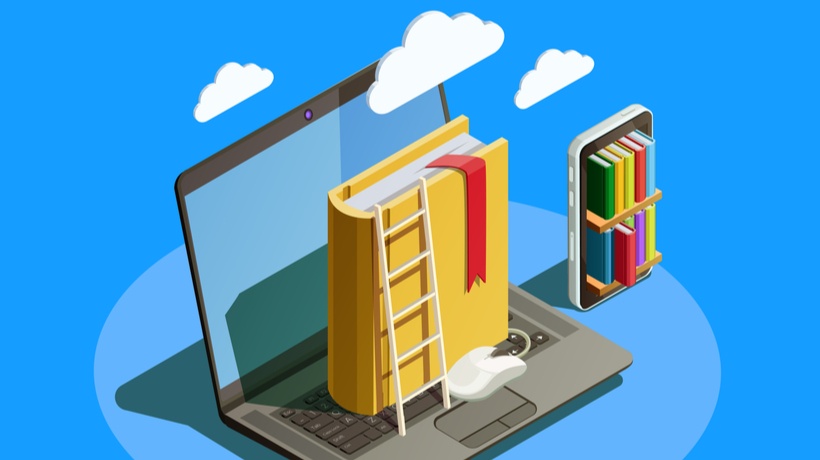Translating Your Skills For The World Of ID
When I completed my Bachelor of Education degree, I thought my career journey was set. I studied to become a high-school teacher, so a high-school teacher I became. I was looking forward to a linear, uncomplicated path to retirement, and what I found was everything but that. I was downright jarred, and quite honestly disappointed when I didn’t find the enjoyment in the classroom that I was expecting. This is not because I was doing anything wrong, or that something was wrong with my students—the situation just wasn’t working. After a lot of introspection, and admittedly a quarter-life crisis, I came to the obvious but scary realization that classroom teaching was, in fact, not my vocation.
The World Of Education From A Different Perspective
For months after leaving my teaching position, I was filled with shame and embarrassment. I loved learning and knowledge, but could not understand how I could work in the education field without being in a brick-and-mortar classroom. Since I couldn’t wait to solve this predicament because of bills, I took up a contract position as a program assistant in my hometown’s post-secondary institution thanks to a network connection. I thought this would buy me the time necessary to figure out what I wanted to do. As time went on, I began to learn about the world of education from a different perspective—one I had not known existed. Fortunately for me, the department I was working in specialized in continuing education for adult professionals. It was here that I was also given the opportunity to have a mentor who helped me very much to course correct my career journey.
With these new experiences in tow, I learned that education is not limited to the classroom. It seems obvious to me now but as they say, what’s obvious to you is only obvious to you. As my own experiential education grew, I learned that education can take place at a conference, in the online world, or within a community of practice…the possibilities are endless! Shortly thereafter, I moved up in my career from program assistant to program coordinator and I was able to sit in on scientific planning committees and was privy to Subject Matter Experts (SMEs) discussing things like the education that was needed in their community of professionals, and what learning objectives and learning activities educational consultants thought would best meet these needs. I took a particular interest in our eLearning catalog due to the flexibility and accessibility they offer to students around the globe and with this, my passion for education was renewed.
Armed with these new insights, I completed my Professional Master of Education online while working full-time and absorbing everything I could about adult learning theory and Instructional Design. It was through this experience and my increasing exposure to education projects outside the classroom that I realized my Bachelor of Education equipped me quite well to design learning solutions for a diverse group of learners…I just hadn’t made the connection. Slowly, I began to ask for opportunities to be involved in the Instructional Design projects that my department was responsible for. By the time I left that particular organization, I was an education associate and learning experience advisor. I ventured forward to my current organization where at least half of my role is as an Instructional Designer and the other half as an educational consultant. As I continue to immerse myself in the field of ID, I notice that the overlap between teaching and Instructional Design keeps growing, and so I want to share with you the top five parallels that I continue to see.
1. Your Skills Are Transferable
In teachers’ college, you learn a variety of skills. From time management to communication, your transferable skills are endless! Transferable skills are abilities or talents that are applicable across sectors. Educators often sell themselves short and fail to recognize how transferable their skills are. For example, as an ID you’re usually working under tight timelines—you will need to manage your time effectively to meet deadlines while still delivering a quality product. Even more so, designing educational products requires creativity—you need to think critically (another teaching skill) about how to best organize (another teaching skill) content into a way that is manageable and useful for learners. Next time you’re tapping into your specific skillset, ask yourself how you can apply them to eLearning. The answer might surprise you!
2. You’re Performing Needs Assessments All Of The Time
A good needs assessment is at the heart of Instructional Design projects. You can’t begin designing a course or eLearning until you know what learners need to know. Similarly, you are not going to teach a topic to students without first knowing what it is, exactly, that they need to know. You will always have a diverse population of learners with different learning needs because no two people are alike, so regularly assessing their learning needs is necessary. This is no different from assessing the learning needs of an organization’s employees, for example—especially since things change so rapidly in this interconnected world. Once you’ve identified the gap(s) made visible by the needs assessment, you start to fill it with a learning approach that is responsive to those needs. In ID, designing learning solutions works the same way—find the gap and then execute the most appropriate method(s) to close it.
3. Quality In The Classroom Is The Same As Quality Outside Of The Classroom
No matter the learning product, you’re still providing students with a learning experience so you want to ensure it’s the best one they have. Whether that’s using a lesson plan or a learning module—the commitment to quality doesn’t disappear just because you can’t see your learner. You would never sacrifice your pedagogy in front of a classroom of wide-eyed learners and the same principles apply here. ID is the creation of learning experiences the same way that teaching is a creation of a learning experience. Regardless of whether you’re in the classroom or outside of it, quality education is non-negotiable.
4. "Success Criteria" Is Forever
As an ID, you wouldn’t begin to build your course or learning materials until you knew what success was supposed to look like after the education was consumed. Starting a project without having some understanding of the intended outcomes is like going for a walk in the rain without an umbrella—impractical. You need to define what success will look like beforehand so that you can work backward. For instance, if you need your learners to be able to define five key terms, then you want to ensure that your course provides the definitions of said key terms. In turn, the summative assessment would ask learners to recall these definitions as a means to assess the success of the course. Whereas "success criteria" are the foundation of ID, learning objectives are the anchors…more on that next!
5. Learning Objectives Are Still The Anchors
Did you think teachers' college was the last time you’d hear about Bloom’s taxonomy? Think again! Learning objectives are the anchor of every curriculum. You can’t start teaching a lesson or designing a course outline without knowing where you are going. Every learning item, regardless of its medium, is rooted in learning objectives. As an ID, you will soon realize that learning objectives provide an invaluable road map to your projects. If a project begins to veer off course or expand in scope, you can point your SMEs back to the learning objectives for clarity and direction. While finalizing the learning objectives can require a bit of back and forth between IDs and SMEs, it’s worth the game of ping-pong. Once you've reached a mutual agreement, you can set sail and start the fun part: create and design.
Conclusion
All in all, I am very grateful for my education degrees though I took a non-traditional career path in education. My once imagined linear path is marked by an unanticipated scribble but now I no longer feel shame or embarrassment for not being in the classroom. Instead, I am proud that I was able to take an innovative approach to my career trajectory and that it’s landed me right where I am meant to be. As a final note of encouragement to my fellow teachers, both in the classroom and not, I want to underscore that teachers have one of the most diverse skillsets that are too often underutilized. So with that, I say don’t draw yourself into an imaginary box…rather, draw yourself right outside the lines.








